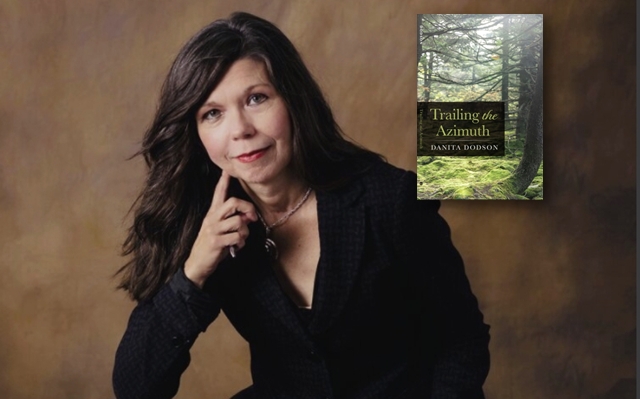**On a mobile format this book review is best viewed using landscape orientation.
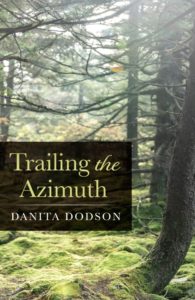 Danita Dodson is a contemplative, a mystic, and an alchemist whose feet are planted solidly in the turf of the natural world – particularly that of East Tennessee. As the poems in her debut collection, Trailing the Azimuth, attest, she is also a sojourner of varied talents and pursuant passions. A lover of scholarship and diverse experiences, Dodson has been a Fullbright-Hays fellow in Turkey, a professor in Nicaragua, an amateur archaeologist in the Southwest, and a Spanish teacher in Appalachia. She currently teaches English and Humanities at Walter State Community college.
Danita Dodson is a contemplative, a mystic, and an alchemist whose feet are planted solidly in the turf of the natural world – particularly that of East Tennessee. As the poems in her debut collection, Trailing the Azimuth, attest, she is also a sojourner of varied talents and pursuant passions. A lover of scholarship and diverse experiences, Dodson has been a Fullbright-Hays fellow in Turkey, a professor in Nicaragua, an amateur archaeologist in the Southwest, and a Spanish teacher in Appalachia. She currently teaches English and Humanities at Walter State Community college.
The poems in this volume are linked by references to the azimuth, originally an astronomical term meaning “directions.” The expression is generally defined as a horizontal angle measured from any fixed reference plane. Similar to an astrolabe, the azimuth marker aids travelers in pinpointing location and finding direction. In her preface, Dodson acknowledges the source of inspiration for the book’s title and central trope:
I give special thanks to my nephew, Caleb Seals, who inspired the title of this book in one of our coffee conversations, during which he described how he had navigated the wilderness in military field exercises, using a compass and a map to chart the azimuth–—in other words, to find bearings in the puzzling wild and to seek the direction toward which to walk. The symbol of the azimuth is woven into the fabric of the book, representing the trajectories for both physical journeys and those allegorical ones that we all must make through the wildernesses of life.
Trailing the Azimuth is divided into five “treks,” each one designed to discover beauty and meaning in the mysterious cycles of life. The poet is a keen, nuanced observer whose lush imagery blossoms and sustains on every page. Take, for instance, the poem “Clinch River Song” from the first section titled “Tennessee Trails.” The first stanza opens as follows:
Roving in the viridescence,
coursing leisurely
on this errant kayak,
I float like an eternal plan
upon the old river
in the depths of my forest world,
my ancient wilderness,
my heart.
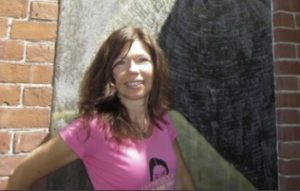 The reader is struck by how skillfully Dodson navigates the mystic currents of the river, being both at home and at peace on the “ambling liquid highway.” It’s a treat, too, to find a poet unafraid to use Latinate language, though her diction never seems stilted, abstract, or artificial. Dodson describes in one stanza how the river aquired its name:
The reader is struck by how skillfully Dodson navigates the mystic currents of the river, being both at home and at peace on the “ambling liquid highway.” It’s a treat, too, to find a poet unafraid to use Latinate language, though her diction never seems stilted, abstract, or artificial. Dodson describes in one stanza how the river aquired its name:
. . . was dubbed the Clinch
when an Irishman–—drowning–—
begged his kindred explorers,
“Clinch me!”
And we did, body and name.
The poet’s generous spirit is evident in the concluding stanza when she asks readers to join her:
To the river that remembers
salvation,
I invite all souls
who wander
who thirst
who dare
to come and clinch peace.
 Dodson’s spirituality isn’t latent in these poems as she seeks to make the invisible manifest, echoing Leo Tolstoy’s maxim that the “Kingdom of God is within.” I wonder, as William Blake claimed, whether Dodson saw angels as a child. She certainly evinces Blake’s vision of seeing “a world in a grain of sand/ and a heaven in a wildflower/ Hold infinity in the palm of your hand/ and eternity in an hour.” In short, Dodson’s musings and meditations don’t simply describe nature; they embody its spirit as they did for the writer inspiring her poem “Remembering Thoreau,” in the section titled “Outbound Trek”:
Dodson’s spirituality isn’t latent in these poems as she seeks to make the invisible manifest, echoing Leo Tolstoy’s maxim that the “Kingdom of God is within.” I wonder, as William Blake claimed, whether Dodson saw angels as a child. She certainly evinces Blake’s vision of seeing “a world in a grain of sand/ and a heaven in a wildflower/ Hold infinity in the palm of your hand/ and eternity in an hour.” In short, Dodson’s musings and meditations don’t simply describe nature; they embody its spirit as they did for the writer inspiring her poem “Remembering Thoreau,” in the section titled “Outbound Trek”:
Stones stacked simply
still stalwartly
balanced and poised
plumb in the present
between yesterday and tomorrow.
Rising cairn–—pieces of the earth
fitting each other perfectly
as eulogy to simplicity
monument of decision
to live intentionally
to face raw roots with joy
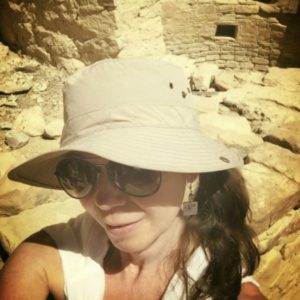 Dodson’s archaeological excavations in the American Southwest afforded her the opportunity to piece together a mosaic of peoples and their histories, discovering a deliberate simplicity like that advocated by Henry David Thoreau and other transcendentalist writers. For Dodson, words seem endowed with an innate, transcendent power to raise poet and reader into a higher realm, as witnessed in the second half of the poem:
Dodson’s archaeological excavations in the American Southwest afforded her the opportunity to piece together a mosaic of peoples and their histories, discovering a deliberate simplicity like that advocated by Henry David Thoreau and other transcendentalist writers. For Dodson, words seem endowed with an innate, transcendent power to raise poet and reader into a higher realm, as witnessed in the second half of the poem:
Elements wafting as blessings
transcendental in woods
faeries of imagination
sarsen strength
eternal witness to pure being
to greet life with a namaskar
Gentleness carpeting the earth
circular mandala of divine path
rambling loop around Walden Pond
whispers of truth in the breeze
fully awake and fully aliveafter Walden: A Life in the Woods
In the third section, “Global Footsteps,” the poet encounters the paradoxes of living in the Third World, particularly the way people faced with abject poverty manage to remain joyful, as seen in “Caribbean Countenances”:
In the depths of Kingston, day upon day,
I regard suppliant toddlers, their feet caked
with the unrelenting loam of shanties.
They teeter outside the sullied compounds
that encage their lives in ramshackle tin,
yet they smile in a way that I cannot.
The line “yet they smile in a way that I cannot” is a sad indictment of Western colonialism and affluence, a statement reminiscent of Mother Teresa’s observation that we in the West are “the poorest of the poor.” Dodson then describes a chance encounter with a young mother doing laundry. They “talk for the longest time,” the young woman’s life-story unfolding “like a novel” and eventually depart, but not before the woman
reaches down, scoops up a small object,
handing it to me as a token of friendship:
You take this. It’s a piece of Arawak pottery.
We find all along the beach now and then.
Dodson is undoubtedly mindful of the sad history of the Arawak, an indigenous people tortured, murdered, and finally decimated by successive waves of conquistadors, among them the now celebrated Christopher Columbus. The poet reflects on her status as a recipient of gentle, if undeserved, mercies, inspiring hopefulness and unity:
Bearing another Jamaican face in my mind,
along with a pottery sherd and good tidings,
I muse the meaning–—the holy message.
Perhaps the glimpses of these countenances
merge with my own expanding wakefulness.
I and I. We walk this road together. One.
The poem ends with a gloss:
“I and I” is a Rastafarian expression of unity, meaning that the God
in me is the God in you, a one love.
The fourth trek, “Wayfarer’s Psalms,” reinforces the notion of words as energic units of discovery and healing. Throughout this collection, Dodson generously acknowledges the literary influences shaping her work, ones emphasizing that poetry is inclusive and communal in nature. In her poem “Reading Persian Poetry,” the poet savors “the honeyed words of Hafiz,” a fourteenth century lyric poet of Persia. While reading and lingering over a cup of chai, Dodson inhales her surroundings where
Spiraling incense of nag champa
climbs towards the brocade valance
above the open window,
directing my eyes to a crow
weaving the ether in arc,
embracing a direction inborn,
navigating the sky divinely
like it is a road with all answers.
And deep inside me right now
I feel the sweet sure silence
and the smile of the Friend.
This poem reminds us of the epiphanic qualities of literature, its ability to create quantum states in which the reader can reside in more than one point on the space-time continuum.
Dodson’s fifth section, “Pandemic Pathways” anticipates hope despite the crisis we currently face. She understands that the existential dilemma the Pandemic poses is uniquely our own. However, she also grasps that plagues of all sorts have afflicted humankind since the dawning of ages. Dodson has a personal connection to a particular one, as revealed in “Casualty of Spanish Flu.” I cite the poem in its entirety because it is of one weave, each line awaiting the next:
Encased in an oval on the wall,
sepia image in brown-marbled tin,
with handsome face, perfect hair,
and hands set solidly upon legs,
you do not disclose your fate.I inherited your dignified portrait
from your daughter, my grandmother,
who never quite recovered the fact
that you left her, she not grasping
as a four-year-old girl that you
would not return to rejoice the day.You walked one November hour,
your birthday, out into the cold,
cold rain, not seeking gifts yourself
but longing to give the milk of life
to your darling wife and children.As you struggled hard to breathe
in the icy deluge, ignoring a cough
because you were strong and stocky,
having only walked thirty-one years
on the solid earth that you farmed,
you carried the battered milk pail,
swinging it gently with resolve
on a path you were destined to take,
finding the cow upon the mountain.A day later, the pneumonia set in,
and you could not possibly know
that you were soon to be another
casualty of the pandemic of 1918.But your face we reclaim, recall,
retell today, knowing that to us,
your descendants, you will never,
ever, be simply another number.
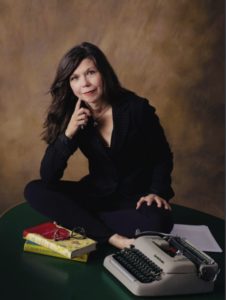 Clearly for Dodson, poetry functions to ensure that people and our memories of them don’t die a second, more final time.
Clearly for Dodson, poetry functions to ensure that people and our memories of them don’t die a second, more final time.
Trailing the Azimuth is an extraordinary collection, an exquisite cornucopia of sights, sounds, and impressions. I lived with these poems for more than a month before reviewing this volume. Recalling that “we judge the literature, but the literature judges us,” I wanted to be equal to the task of offering a serious, meditative, and well-deserved appraisal. Each re-reading of the poems found me the grateful beneficiary of Danita Dodson’s keen sensibility and sure-handed writing, guaranteeing that I’ll be pulling this book from my shelf, savoring its contents, for a long time to come.
Click the following images to find Danita Dodson’s poetry collection, Trailing the Azimuth:
Follow her on Facebook, Instagram, and Twitter.
Also, visit her website, YouTube channel, and blog.
**All images used with Danita Dodson’s permission – some images cropped to fit
